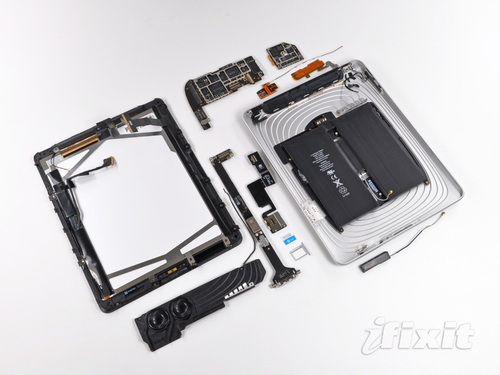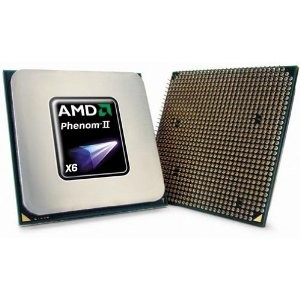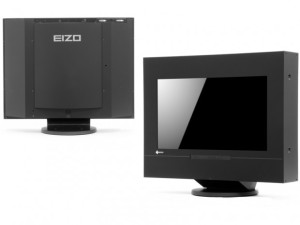We’ve previously posted a look at the iPad 3G’s communications board. Now the team at iFixit have given us a complete look at the entire iPad 3G: it’s been completely torn apart and its parts analyzed. Read on to find out what they found when they looked inside.
* The immediate visible difference is the inclusion of a black plastic RF window on top of the iPad for better antenna reception.
* The black RF window significantly changes the opening procedure. You cannot start separating the display using the notches on the top (à la Wi-Fi version), since that will undoubtedly break the RF window. You have to start from the right side and gingerly proceed to the top and bottom of the iPad.
* There are actually FIVE antennas in this iPad: Two antennas handle the cell reception — one is in the RF window on top, the other attaches to the LCD frame. A single GPS antenna is also housed in the RF window on top. Just like the iPad Wi-Fi, there are two antennas that handle Wi-Fi / Bluetooth connectivity, one in the Apple logo and another to the left of the dock connector.
* You heard that right, folks: Apple looks to be using the entire LCD frame as an antenna!
* Who would’ve thought: Apple uses the same 3G baseband processor in both the iPhone 3GS and the iPad 3G.
* The baseband processor in question is the Infineon 337S3754 PMB 8878 X-Gold IC. It was actually white-labeled on the production unit, but with enough sleuthing we were able to confirm its true identity.
* The iPad 3G has a Broadcom BCM4750UBG Single-Chip AGPS Solution, whereas the iPhone 3GS uses an Infineon Hammerhead II package. Big win for Broadcom!
* Apple did not change any major suppliers between manufacturing the pre-production unit they provided the FCC and their final production run.
Source: iFixit.




Pingback: Tweets that mention A Detailed Look Into The Insides Of The iPad 3G | TheTechJournal.com -:- Technological News Portal -- Topsy.com